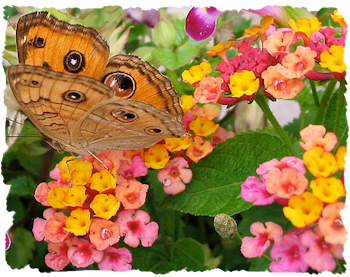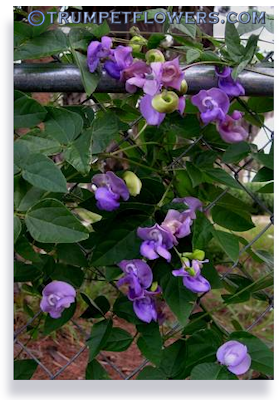Grow Lantana
 Lantana is a wonderful perennial, semi∼woody to woody shrub for use as decorative garden bedding. It has the added benefit of nectar feeding bees and butterflies.
Lantana is a wonderful perennial, semi∼woody to woody shrub for use as decorative garden bedding. It has the added benefit of nectar feeding bees and butterflies.
Lantana has been selectively chosen in previous years to also form a runner type cultivar group. These are found in white and purple. A lovely, shrubby yellow has also been created.
Lantana's origin is from the tropical regions of the Americas and Africa. Found on the sides of jungle, it is really more of a savannah type plant.
If you live in a frost free zone, lantana will continue to grow taller each year unless pruned. The once green stems will harden and become woody. When we moved to the property we currently live on, there was a 15 foot common lantana in the back yard.
Lantana does well in a sandy, cactus type soil. Water it every other day until it's roots become established in the soil. Use granular fertilizer to keep it fed through the growing months. In winter, cover if you live in zones 8 to 7. Zones 6 and up, either remove the plant from the landscape, or buy new ones come spring. You can try mulching it for some protection, to see if it returns in these lower numbered zones.
Lantana will form small seed heads when the flowers die, if you let them stay on the shrubs. Only the seeds of the common lantana will come true if you try to propagate them in this manner. I personally have more luck with taking semi∼green stem cuttings in late fall.
Living down here, lantana does grow into a very large, woody shrub, often as tall as 10 feet tall. Prune it up to allow air circulation into the plant by cutting at the nodes on the outer branches. Just as you would open up a fruit tree cultivar, you can prune the larger, woodier lantana.
Where I live spring heats up too fast and the summers are too hot to attempt propagation. So taking stem cuttings is better in fall. As I mentioned above about pruning, if you do this in the fall, you can double your efforts by trying to root up some of those stem cuttings. To try your hand at this, see the page on Propagate Your Own Plants page for more information on this.
If you are growing lantana to attract butterflies, make sure the fertilizer you are using is organic. Since butterflies and their larvae are very sensitive to chemicals, using chemical based fertilizers can harm or even kill both forms of the butterflies. When buying a plant from a nursery that is not certified as organic, let the plant grow out a few weeks in a protected area before allowing the butterflies to find them.
Tags: grow lantana, care and grow lantana, butterfly plant, lantana, care of lantana,



